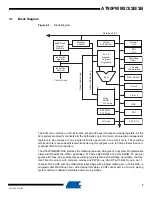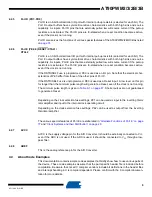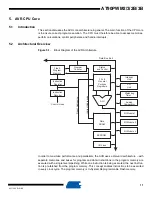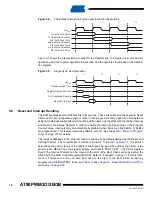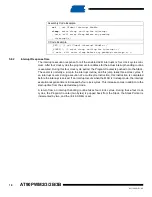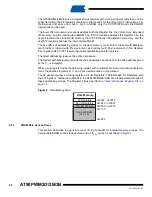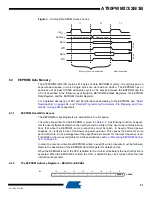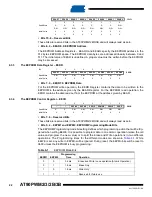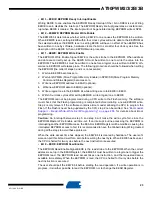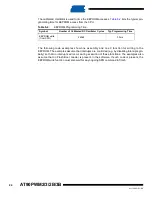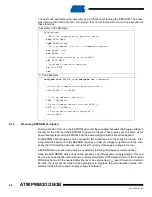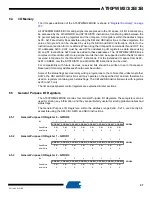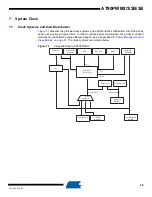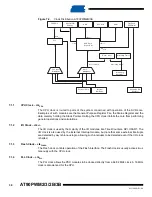
16
4317I–AVR–01/08
AT90PWM2/3/2B/3B
Figure 5-4.
The Parallel Instruction Fetches and Instruction Executions
shows the internal timing concept for the Register File. In a single clock cycle an ALU
operation using two register operands is executed, and the result is stored back to the destina-
tion register.
Figure 5-5.
Single Cycle ALU Operation
5.8
Reset and Interrupt Handling
The AVR provides several different interrupt sources. These interrupts and the separate Reset
Vector each have a separate program vector in the program memory space. All interrupts are
assigned individual enable bits which must be written logic one together with the Global Interrupt
Enable bit in the Status Register in order to enable the interrupt. Depending on the Program
Counter value, interrupts may be automatically disabled when Boot Lock bits BLB02 or BLB12
are programmed. This feature improves software security. See the section
for details.
The lowest addresses in the program memory space are by default defined as the Reset and
Interrupt Vectors. The complete list of vectors is shown in
. The list also
determines the priority levels of the different interrupts. The lower the address the higher is the
priority level. RESET has the highest priority, and next is PSC2 CAPT – the PSC2 Capture
Event. The Interrupt Vectors can be moved to the start of the Boot Flash section by setting the
IVSEL bit in the MCU Control Register (MCUCR). Refer to
for more infor-
mation. The Reset Vector can also be moved to the start of the Boot Flash section by
programming the BOOTRST Fuse, see
“Boot Loader Support – Read-While-Write Self-Pro-
clk
1st Instruction Fetch
1st Instruction Execute
2nd Instruction Fetch
2nd Instruction Execute
3rd Instruction Fetch
3rd Instruction Execute
4th Instruction Fetch
T1
T2
T3
T4
CPU
Total Execution Time
Register Operands Fetch
ALU Operation Execute
Result Write Back
T1
T2
T3
T4
clk
CPU







